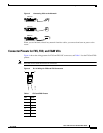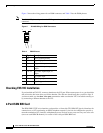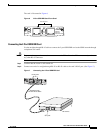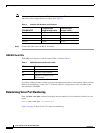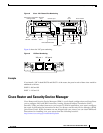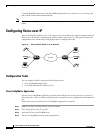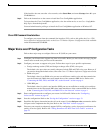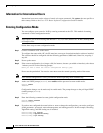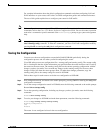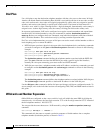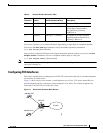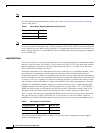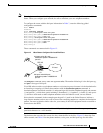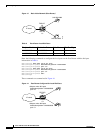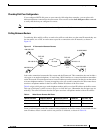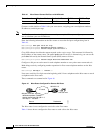
13
Cisco 1751 Voice-over-IP Quick Start Guide
78-11259-05
Configuring Voice-over-IP
For complete information about the global configuration commands and about configuring LAN and
WAN interfaces on your router, refer to the Cisco IOS configuration guides and command references.
The rest of this guide explains how to configure your router for VoIP traffic.
Note Voice configuration uses a number of Cisco IOS commands. For complete information about these
commands, refer to the Cisco 1751 Router Software Configuration Guide. You can also enter a question
mark after a command or partial command at the
Router(config)# prompt to get syntax and argument
help.
Note At any point, you can see the operating configuration, including changes you just made, by entering the
show running-config command. To enter this command, you have to exit from configuration mode by
pressing Ctrl-Z or entering the end global configuration command.
Saving the Configuration
You must save the new configuration to nonvolatile RAM (NVRAM) periodically during the
configuration process and also when you finish configuring the router.
Cisco IOS software uses two configuration files—startup config and running config. The startup-config
file is a backup file that has all the information you specified about the router interfaces and is used by
the router on the next restart. The running-config file has the current operating configuration with the
changes you have just made. You can make any changes to the running-config file; however, these
changes will be lost when the router powers down. To make these changes permanent, copy the
running-config file to the startup-config file stored in NVRAM.
Follow these steps for each router to write the new configuration to NVRAM:
Step 1 Exit configuration mode, and return to the enable prompt by pressing Ctrl-Z or entering the end global
configuration command.
Step 2 To see the startup configuration stored in NVRAM, enter the following command at the enable prompt:
Router# show startup-config
Step 3 To see the operating configuration, including any changes you have just made, enter the following
command:
Router# show running-config
Step 4 To write your changes to NVRAM and make them permanent, enter the following command:
Router# copy running-config startup-config
Building configuration. . .
[OK]
Router#
The router is now configured to boot in the new configuration.



